Let’s dive into a topic that’s all too familiar but often overlooked: “Training ADHD” or “Program Hopping.”
You know, that restless itch to jump from one workout program to another?
Yeah, we’ve all been there. It’s a common issue, and today we’re going to unpack why it happens and why it’s a roadblock on your fitness journey.
The Allure Of The New And Why It’s A Trap
The Honeymoon Phase
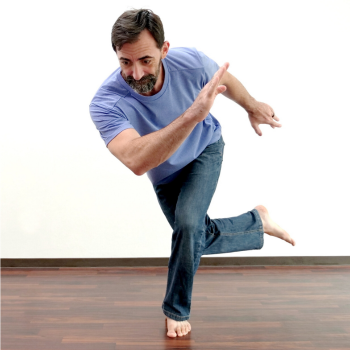 We get it; the initial excitement of a new program is like a honeymoon phase. Everything is fresh, exciting, and you’re pumped to get started. It’s like love at first sight. You’re stoked, committed, and can’t wait to dive in.
We get it; the initial excitement of a new program is like a honeymoon phase. Everything is fresh, exciting, and you’re pumped to get started. It’s like love at first sight. You’re stoked, committed, and can’t wait to dive in.
But fast-forward a couple of weeks, and the honeymoon is over. The routines feel monotonous, you start to feel stale, and you’re already scouting for the next big thing. The sad truth? Most folks jump ship too quickly, missing out on the real gains that come with time and consistency.
Estimates vary on the average time people stay on a program but it’s usually no longer than a couple weeks, and generally, people fall off the training wagon way too soon to reap any real benefits.
When Patience Wanes: The Myth Of Immediate Results
Ah, the impatience of wanting to see those abs yesterday. We’ve all been there.
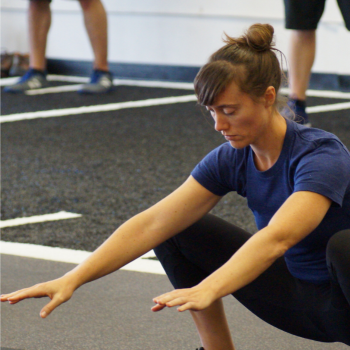 The desire for immediate results is a common pitfall in physical fitness. Building strength, greater flexibility, or being better conditioned requires time and consistent effort. Unrealistic expectations often lead to premature abandonment of a program, usually under the false impression that the regimen is not yielding results.
The desire for immediate results is a common pitfall in physical fitness. Building strength, greater flexibility, or being better conditioned requires time and consistent effort. Unrealistic expectations often lead to premature abandonment of a program, usually under the false impression that the regimen is not yielding results.
Unrealistic expectations can lead to dissatisfaction, making you feel like the program isn’t “working,” when in reality, you haven’t given it enough time.
The Social Media Influence And Fear Of Missing Out (FOMO)
Scroll through Instagram, and you’ll see fitness influencers flaunting their biceps and sharing highlight reels of their strength and movement abilities. And it’s very reasonable to think, “Maybe that’s the program I should be doing!” Friends, social media, and influencers can all make you question your current program, leading to that dreaded FOMO.
It’s very tempting to feel that the best program out there is the one you aren’t doing!
Break Out Of Your Patterns: The Hidden Costs Of Program Hopping
First of all, there’s nothing wrong with variety and changing things up. If it keeps you going then it’s a good thing!
But there’s a big difference between adapting and adjusting mindfully and skipping around so much you don’t really get what you want out of your training.
The Science of Progress: Minimizing Variables
When you’re hopping from program to program, you’re introducing too many variables to understand what’s actually working for you. This is akin to a scientist trying to determine the effect of a particular ingredient in a complex recipe by changing multiple ingredients at once. It becomes nearly impossible to pinpoint which change led to the observed results.
It’s not that you have to do the three exact same exercises the exact same way, for the exact same schemes. But having a solid bout of planned training ensures that you’re progressing in a structured manner. This structure allows you to make intentional changes, one or two at a time, and observe their effects.
 Introducing too many variables not only complicates analysis but can also be overwhelming. If every session feels like you’re starting from scratch, it can lead to decision fatigue and burnout. A structured program provides a roadmap, reducing the mental load of planning and ensuring that you’re building on previous sessions rather than reinventing the wheel each time.
Introducing too many variables not only complicates analysis but can also be overwhelming. If every session feels like you’re starting from scratch, it can lead to decision fatigue and burnout. A structured program provides a roadmap, reducing the mental load of planning and ensuring that you’re building on previous sessions rather than reinventing the wheel each time.
Switching programs might give you the feeling that you’re doing something new and therefore making progress. But the truth is, you’re not giving yourself enough time to grow and see real results.
The Mirage of Immediate Results
 Trying out a new workout program can be exciting, giving you a burst of motivation and enthusiasm. It feels like you’re breaking out of a rut, exploring new territories, and challenging yourself in different ways.
Trying out a new workout program can be exciting, giving you a burst of motivation and enthusiasm. It feels like you’re breaking out of a rut, exploring new territories, and challenging yourself in different ways.
This initial rush can be mistaken for genuine progress.
While it’s essential to keep workouts engaging and occasionally introduce new challenges to prevent plateaus, there’s a significant difference between strategic variety and constant program-hopping.
Consistency in training allows your body to adapt to specific stimuli, leading to improvements in strength, endurance, and skill. On the other hand, jumping around too much and you’ll linger in the initial phases of adaptation, never truly allowing your body to progress to more advanced stages.
By frequently switching programs, you’re resetting the clock on your progress. It’s like planting a seed and digging it up every week to plant it somewhere else, expecting it to grow faster. In reality, it needs consistent care and time to flourish.
Substance Over Novelty: The Gold Of In-Depth Training
The constant search for something new and exciting can make it difficult to stick with a program long enough to truly understand it. While the allure of novelty can be captivating, it often comes at the expense of depth and mastery. If you don’t stick to it, you won’t get good at it, and you won’t understand how it’s affecting you.
In an age of information overload, we’re constantly bombarded with the latest trends, techniques, and “revolutionary” methods. While exploring new avenues can be beneficial, it becomes problematic when it prevents us from delving deep into any one area.
True understanding and proficiency in any field or practice comes from time, repetition, and consistent effort. By hopping from one program or method to the next, we deny ourselves the opportunity to fully immerse and understand the nuances and intricacies. It’s like skimming the surface of a lake without ever diving deep to see what lies beneath.
Jump One Last Time: Strategies For Finally Finding What Works For You
Let’s go over some practical tips to keep you moving forward and get the most out of your efforts.
Stay The Course: Commitment Leads To Growth
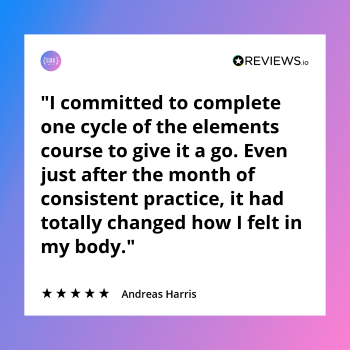 Before you jump ship, commit to sticking with a program for a set period. Give it time to show its effectiveness.
Before you jump ship, commit to sticking with a program for a set period. Give it time to show its effectiveness.
Setting a specific time frame for any program or practice serves multiple purposes. Firstly, it provides a clear goal and structure, ensuring that you give the method a fair chance to demonstrate its value. Secondly, it allows for measurable progress, as you can assess your growth and changes over this period.
Our bodies and minds go through adaptation cycles. Whether it’s a fitness regimen, a new learning method, or a professional project, initial stages might be challenging or even feel unproductive. However, with time and consistent effort, we start to adapt, improve, and see tangible results.
Committing to a plan for a good amount of time respects this natural adaptation process. How long is long enough? In my opinion, two months at a minimum. Don’t flit around always looking for something else. Give yourself a chance to get better!
Depth In Fitness: Why Superficial Metrics Aren’t Telling You The Whole Story
When it comes to fitness, we often measure progress in terms of numbers—how much weight you can lift, how fast you can run a mile, or how many pull-ups you can do. While these metrics are important, they’re not the be-all and end-all of fitness. In fact, they can sometimes be misleading indicators of your overall well-being and physical capabilities.
Taking cues from the general philosophy of GMB’s “Listen to Your Body” approach, it’s crucial to tune into what your body is telling you. Are you feeling energized after a workout, or are you drained and dreading the next session? Are you moving more fluidly in your daily activities, or are you feeling stiff and restricted?
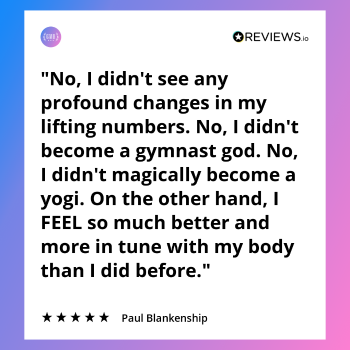 The quality of your movements can be a far better indicator of progress than the quantity. For instance, performing a smaller number of well-executed push-ups is more beneficial than cranking out dozens of sloppy ones.
The quality of your movements can be a far better indicator of progress than the quantity. For instance, performing a smaller number of well-executed push-ups is more beneficial than cranking out dozens of sloppy ones.
Especially when you’ve done them in a way that emphasizes all the details of movement quality that energizes you, not breaks you down.
This is a big part of why our training programs include a dedicated section to reflect on what you just did and analyze beyond just the numbers of the workout. But instead how it is really affecting you.
Don’t underestimate the mental and emotional aspects of training. Feeling more confident, less stressed, and generally happier are also valid and important markers of progress!
Your fitness routine should contribute to your overall health, not detract from it. Are you sleeping better? Is your appetite and digestion improved? These are also signs that you’re on the right track.
And you really won’t start to understand this until you settle into a training routine and really assess how your body is responding to it. You won’t get these valuable insights switching plans without a deliberate process.
The Richness Of The Path, Not Just The Peak
If you’re constantly fixated on the end goal—whether it’s a six-pack, a marathon finish, or lifting a certain amount of weight—you’re missing out on the richness of the journey. Fitness is not just a checkbox to tick off; it’s a lifelong endeavor that offers daily opportunities for growth, both big and small.
It’s natural to be drawn to the allure of achieving specific milestones. These tangible achievements can serve as powerful motivators, pushing us to strive harder and reach further. However, an exclusive focus on these outcomes can overshadow the invaluable experiences and lessons learned along the way.
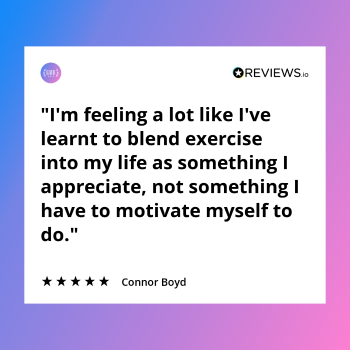 Every training session and every moment within it holds its own value. These seemingly mundane moments are full of valuable insights to learn more about yourself, how your body is reacting and responding to the efforts.
Every training session and every moment within it holds its own value. These seemingly mundane moments are full of valuable insights to learn more about yourself, how your body is reacting and responding to the efforts.
When we shift our perspective from merely achieving goals to relishing the journey, our relationship with fitness evolves. It becomes less about periodic accomplishments and more about a continuous exploration of our potential. This mindset ensures that fitness remains a lifelong companion, offering endless opportunities for growth and self-discovery.
These goal fixations are a major reason why people yo-yo between exercise regimens. When you are so hyper-focused on an end result, then you will always be looking for a finish line.
The trouble is, in this game of life, the finish line is death!
Beyond The Gains: The True Purpose Of Fitness
Understanding why you’re on this fitness journey is incredibly important. Maybe it’s to keep up with your kids, improve your mental health, or simply to feel more confident. When you connect with your “why,” every workout becomes a step toward something greater than just physical gains.
At the core of every enduring commitment is a deep-seated purpose. This purpose serves as our anchor, grounding us during challenging times and propelling us forward when motivation wanes. It’s the intrinsic motivation that fuels our dedication, even when external rewards seem distant.
I think very few people exercise simply to exercise.
This is turning into quite the philosophical discussion but it lies at the heart of why so many people hop around in the exercise programs or just quit altogether. They really haven’t figured out why they are even doing it in the first place.
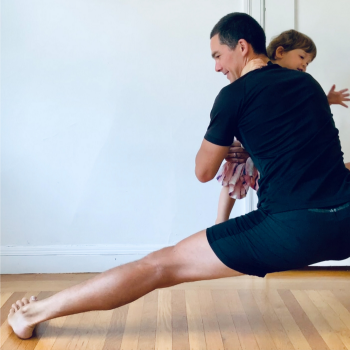 When we identify and resonate with our “why,” our fitness journey takes on a more profound emotional significance. This emotional connection transforms exercising into a meaningful activity. You may not love it but you realize what it’s truly for. It’s connected to what you really want in your life, and thus becomes important enough for you to make it an ongoing habit.
When we identify and resonate with our “why,” our fitness journey takes on a more profound emotional significance. This emotional connection transforms exercising into a meaningful activity. You may not love it but you realize what it’s truly for. It’s connected to what you really want in your life, and thus becomes important enough for you to make it an ongoing habit.
Use A Dynamic Blueprint That Evolves With You
Is there then a “best and optimal” program that would meet all of your needs all of the time?
There could be! If it’s a well-rounded program that offers a comprehensive approach and an adaptability that can be tailored for you and your priorities at any given time.
What does that look like? Well, it looks a lot like what we’ve covered above.
It should have a solid base of a handful of fundamental movements and exercises. A lot of great programs talk about the need for general categories of movement (upper/lower body push, pull, etc) and those are a great start for sure.
But the main thing here is having movements that you can really sink your teeth into and figure out how they work for you. They should have an inherent quality of full body integration and an execution that you can readily adapt and vary whenever it’s necessary for you.
Adaptations and changes in training that happen organically like this can appease some of the urges to try yet another new program. A lot of the looking around for something else is because we haven’t been taught that this variability exists.
 In our method we’ve chosen locomotion as the base movements to improve your physical capacity and resilience.
In our method we’ve chosen locomotion as the base movements to improve your physical capacity and resilience.
These are:
- Bear: Which develops upper body stability and coordination
- Monkey: Which develops your squat and core strength
- Frogger: Which develops your hip mobility and strength
- Crab: Which develops your back and shoulder strength and stability
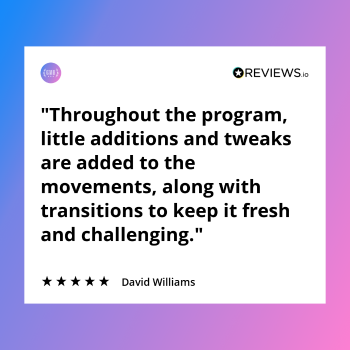 One of the most significant advantages of locomotion exercises is their inherent variability. Each single movement can be performed in numerous ways—forward, backward, laterally – at different speeds and body area emphases.
One of the most significant advantages of locomotion exercises is their inherent variability. Each single movement can be performed in numerous ways—forward, backward, laterally – at different speeds and body area emphases.
This means that within the framework of fundamental movements, there’s a vast spectrum of actions to explore. You can continuously modify and adapt these movements to keep your workouts fresh, challenging, and aligned with your goals, negating the need to jump from one program to another in search of novelty.
Locomotion exercises also offer an opportunity to foster a deeper understanding of your body. As you practice and refine these movements, you become more attuned to your body’s mechanics, strengths, and areas that need improvement. This heightened awareness allows you to make informed decisions about your training, ensuring that your efforts are both effective and sustainable.
 Program hopping is a common pitfall that can derail your fitness journey. It’s driven by a variety of factors, from boredom and impatience to the influence of social media. By understanding the pitfalls of program hopping and how to overcome them, you can set yourself up for a lifetime of progress.
Program hopping is a common pitfall that can derail your fitness journey. It’s driven by a variety of factors, from boredom and impatience to the influence of social media. By understanding the pitfalls of program hopping and how to overcome them, you can set yourself up for a lifetime of progress.
Break the cycle and engage in training that’s meaningful for you.
Systematic and Adaptable Training
Our Elements program adapts and changes to your needs, providing you with the tools to improve your physical capabilities and resilience for every aspect of your life.


